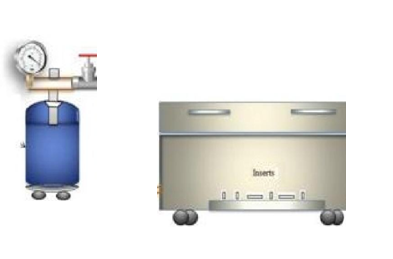DCT -Deep Cryogenic Treatment
Deep Cryogenic Treatment for longer use life of tools and components.

Cryogenic treatment is the ultra low temperature processing of materials to enhance their desired Metallurgical and Mechanical properties. Ultra cold temperatures are achieved using computer controls, a well-insulated treatment chamber and liquid nitrogen (LN2).
Applications on alloy steels, tool steels, brake discs, composites, cutting tools, plastics and race car engines.
Freezing the material at -300° f to modify the micro structure and improve the properties.
- A” Dry” Process
- A”one time “treatment
- A “through” treatment
- A treatment to improve properties – particularly the wear properties
HOW IT WORKS
The components being treated are held in a vacuum insulated chamber that is cooled below -300°F (-184°C) by vaporizing liquid nitrogen in a heat exchanger. Unlike cold treating, the process follows temperature vs. time profiles specific to the material being treated. It is a valid process for almost any metal, carbide, and some plastics. Deep cryogenic treatment affects the entire volume of the component being treated, so re-treating is not necessary when components wear or are sharpened.

BEST IN CLASS CRYO-PROCESSOR
The temperature vs. time cycle inside the chamber is programmed according to precise recipes, via a microprocessor based controller interface.
The heat exchanger technology eliminates the possibility of cold shocking the materials being treated by generating a homogenously cold gas atmosphere throughout the chamber. Heating elements in the machine provide a means of bringing the load back to room temperature
or above to add a tempering cycle. A paperless chart recorder provides a record of each cycle.


gears and tools are treated for longer life while in use
TARGET BENEFITS
- Exceptional increase in wear resistance
- Exceptional increase in fatigue life of components
- Reduction of residual stresses
- Reduction of pitting and spalling damage
- Stabilization of dimensions
- Increased toughness and tensile strength